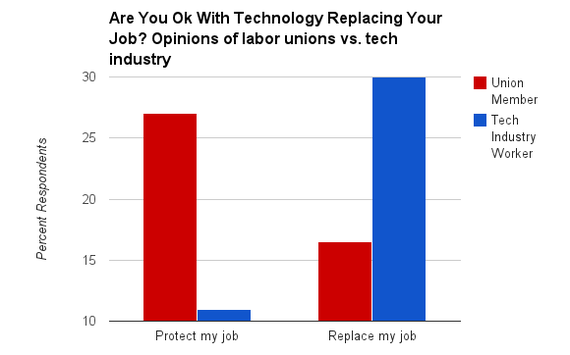A compilation of links to inspiration, news, information, articles, editorials, commentary, entertainment, events, occurrences, resources, photographs, videos, quotes, contoversy, and conditions of interest to Pete Moss.
Search This Blog
NEWS AND ANNOUNCEMENTS
Top News
Real Clear Politics
Voice of Ameica - News
____________________________
Drudge Top Stories
Drudge Archive
Popular Science - New Technology, Science News, The Future Now
Entrepreneur.com - Small Business News and Articles - Latest Articles
Markets
Latest Hurricane Info: [Link Me to NOAA]
[See The Latest Computer Models]
[DHL WORLD CLOCK]
Miami, FL
Live From The International Space Station
Thursday, May 19, 2016
Wednesday, May 11, 2016
Brother MFC 290C - Clogged Print Head

Search Fixya
Browse Categories
Answer Questions
Join
Sign In
Talk to an Expert
Home
Forum
2 Answers
[Original Article]
I have a Brother MFC 290C with a print head that is clogged up with dry ink after the unit sat without use for about 6 months. How can it be cleaned? Where can I buy a new print head and how much would it cost?
7,725 Answers
I have a Brother MFC 290C with a print head that is clogged up with dry ink after the unit sat without use for about 6 months. How can it be cleaned? Where can I buy a new print head and how much would it cost?
Brother Master
7,725 Answers
Re: I have a Brother MFC 290C with a print head that is...
Do the following to clean the print head:
1. Press the MENU key on the control panel.
2. Press the UP or DOWN ARROW key until INK appears on the LCD.
3. Press OK.
4. Press the UP or DOWN ARROW key until CLEANINGappears on the LCD.
5. Press OK.
6. Press the UP or DOWN ARROW key to select BLACK, COLOR or ALL depending on what you want to clean.
7. Press OK.
The machine will clean the print head. When cleaning is finished, the machine will go back to Ready automatically. If you are experiencing a print quality issue, we recommend you repeat the print head cleaning for each color showing an issue at least four (4) times.
If you are experiencing a print quality issue and want to see if the cleanings are improving the print quality, print a Print Quality Check Sheet (PQCS) after the first cleaning and then print another PQCS after repeating the print head cleaning steps at least three (3) more times (4 total cleanings). You can then compare the two Print Quality Check Sheets.
Do the following to print a Print Quality Check Sheet:
1. Press the MENU key on the control panel.
2. Press the UP or DOWN ARROW key until INK appears on the LCD.
3. Press OK. TEST PRINT will appear on the LCD.
4. Press OK. PRINT QUALITY will appear on the LCD.
Do the following to clean the print head:
1. Press the MENU key on the control panel.
2. Press the UP or DOWN ARROW key until INK appears on the LCD.
3. Press OK.
4. Press the UP or DOWN ARROW key until CLEANINGappears on the LCD.
5. Press OK.
6. Press the UP or DOWN ARROW key to select BLACK, COLOR or ALL depending on what you want to clean.
7. Press OK.
The machine will clean the print head. When cleaning is finished, the machine will go back to Ready automatically. If you are experiencing a print quality issue, we recommend you repeat the print head cleaning for each color showing an issue at least four (4) times.
If you are experiencing a print quality issue and want to see if the cleanings are improving the print quality, print a Print Quality Check Sheet (PQCS) after the first cleaning and then print another PQCS after repeating the print head cleaning steps at least three (3) more times (4 total cleanings). You can then compare the two Print Quality Check Sheets.
Do the following to print a Print Quality Check Sheet:
1. Press the MENU key on the control panel.
2. Press the UP or DOWN ARROW key until INK appears on the LCD.
3. Press OK. TEST PRINT will appear on the LCD.
4. Press OK. PRINT QUALITY will appear on the LCD.
5. Press OK.
6. Press COLOR START.
NOTE: The machine will generate the Print Quality Check Sheet (PQCS). On the PQCS each of the four colors is represented by a slanted square pattern made up of 96 individual blocks. The colors should appear (from left to right): Black - Yellow - Cyan - Magenta. Cyan is the light blue color and Magenta is the pinkish color.
Related Questions:
1Answer
Clogged print head
Jan 22, 2013 | Brother International MFC-5890CN - Brother...
2Answers
Brother MFC-290c printer does not print black anymore. Test print page color ok but not black printing. What is the problem?
Feb 20, 2011 | Brother MFC-290C Multifunction Color...
2Answers
How to clean a clogged print head manually?
Dec 17, 2010 | Brother MFC-290C Printer
1Answer
My colors are not printing right....things are
Jul 04, 2010 | Brother MFC-290C Printer
2Answers
Brother MFC-290C not printing black
Jun 25, 2010 | Brother MFC 420CN All-In-One InkJet...
2Answers
Print Brother Mfc-290c Error Print unable 4F
Feb 18, 2010 | Brother MFC-440CN InkJet Printer
2Answers
How to clean the print head - Brother MFC-685CW Inkjet Printer?
Dec 09, 2009 | Brother MFC-685cw InkJet Printer
1Answer
New black ink cartridge won't print for Brother MFC-290C
Sep 20, 2009 | Brother MFC-290C Printer
2Answers
My Brother Printer (model MFC-290c) and ink
Sep 10, 2009 | Brother MFC-290C Printer
6Answers
Black not printing on a Brother MFC-290C
Jul 17, 2009 | Brother Multi-Function Center MFC-240C...
Not finding what you are looking for?
View Most Popular
HL 2140 Laser Printer
Printers & Copiers
Related Question
Clogged print head
Brother International MFC-5890CN - Brother Professional MFC-5890CN
Open Questions:
0Answers
the cat knocked on floor. error light flaching but will not go
Apr 06, 2016 | Brother HL 2140 Laser Printer
0Answers
the cat knocked on floor . error light is flashing but does not go
Apr 06, 2016 | Brother HL 2140 Laser Printer
0Answers
Why won't it print? error message is feeder paper tray 1
Oct 03, 2015 | Brother HL 2140 Laser Printer
0Answers
Where does long silver metal bar belong? fell out when toner was changed, don't know where it goes but toner won't fit back into space. anybody know where it belongs & how do you put it back in?
Aug 14, 2015 | Brother HL 2140 Laser Printer
See all Brother HL 2140 Laser Printer Questions
Related Topics
Brother MFC 290C
2140 click
2140 light

Related Topics:
Brother HL 2140 Laser Printer
Brother HL Printers & Copiers
Brother Printers & Copiers
printing yellow squares
mfc 290c
View All »
Need Help Now?Talk to a repair expert in seconds.Try it Free
Talk to an Expert
Popular Questions
19Answers
Toner LED remains on with after new cartridge is installed.
Brother HL-2040 Laser Printer
10Answers
Hl 2140 error light is flashing
Brother HL-2040 Laser Printer
4Answers
Brother HL-2170W Laser Printer is 'offline" wont turn back online
Brother HL-2170W Laser Printer
12Answers
Drum light flash Brother HL 2070N
Brother HL-2040 Laser Printer
7Answers
Toner and Drum Display Reset
Brother HL 5250DN Laser Printer

Check Out the Latest Printers Report
View all Fixya Reports
Top Brother Printers & Copiers Experts
Jim Yeh
Level 1 Expert
15 Answers

Jesus Colon
Level 1 Expert
12 Answers

Rick Johnson
Level 2 Expert
81 Answers
Are you a Brother Printer and Copier Expert?Answer questions, earn points and help others
Answer questions
Manuals & User Guides
PDFManual
Setup_English.PDF. user-manual-HL 2140...
HL 2140 Laser...
PDFManual
Setup_French.pdf. user-manual-HL 2140...
HL 2140 Laser...
PDFManual
Manual_English.PDF. user-manual-HL...
HL 2140 Laser...
About
Advertising
About Us
Blog
Careers
News & Media
Help
Contact
FAQ
Partners
Privacy Policy
Terms
Community
Forums
Recent Q&A
Top Experts
Videos
Take a Tour
Extras
Join as Manufacturer
Fixboard
Fixya Reports
Tip Leaderboard
Back to Top
Join Fixya on Google+
Follow Fixya on Twitter
Join Fixya on Facebook
Connect with Fixya on LinkedIn
6. Press COLOR START.
NOTE: The machine will generate the Print Quality Check Sheet (PQCS). On the PQCS each of the four colors is represented by a slanted square pattern made up of 96 individual blocks. The colors should appear (from left to right): Black - Yellow - Cyan - Magenta. Cyan is the light blue color and Magenta is the pinkish color.
Related Questions:
1Answer
Clogged print head
Jan 22, 2013 | Brother International MFC-5890CN - Brother...
2Answers
Brother MFC-290c printer does not print black anymore. Test print page color ok but not black printing. What is the problem?
Feb 20, 2011 | Brother MFC-290C Multifunction Color...
2Answers
How to clean a clogged print head manually?
Dec 17, 2010 | Brother MFC-290C Printer
1Answer
My colors are not printing right....things are
Jul 04, 2010 | Brother MFC-290C Printer
2Answers
Brother MFC-290C not printing black
Jun 25, 2010 | Brother MFC 420CN All-In-One InkJet...
2Answers
Print Brother Mfc-290c Error Print unable 4F
Feb 18, 2010 | Brother MFC-440CN InkJet Printer
2Answers
How to clean the print head - Brother MFC-685CW Inkjet Printer?
Dec 09, 2009 | Brother MFC-685cw InkJet Printer
1Answer
New black ink cartridge won't print for Brother MFC-290C
Sep 20, 2009 | Brother MFC-290C Printer
2Answers
My Brother Printer (model MFC-290c) and ink
Sep 10, 2009 | Brother MFC-290C Printer
6Answers
Black not printing on a Brother MFC-290C
Jul 17, 2009 | Brother Multi-Function Center MFC-240C...
Not finding what you are looking for?
View Most Popular
HL 2140 Laser Printer
Printers & Copiers
Related Question
Clogged print head
Brother International MFC-5890CN - Brother Professional MFC-5890CN
Open Questions:
0Answers
the cat knocked on floor. error light flaching but will not go
Apr 06, 2016 | Brother HL 2140 Laser Printer
0Answers
the cat knocked on floor . error light is flashing but does not go
Apr 06, 2016 | Brother HL 2140 Laser Printer
0Answers
Why won't it print? error message is feeder paper tray 1
Oct 03, 2015 | Brother HL 2140 Laser Printer
0Answers
Where does long silver metal bar belong? fell out when toner was changed, don't know where it goes but toner won't fit back into space. anybody know where it belongs & how do you put it back in?
Aug 14, 2015 | Brother HL 2140 Laser Printer
See all Brother HL 2140 Laser Printer Questions
Related Topics
Brother MFC 290C
2140 click
2140 light

Related Topics:
Brother HL 2140 Laser Printer
Brother HL Printers & Copiers
Brother Printers & Copiers
printing yellow squares
mfc 290c
View All »
Need Help Now?Talk to a repair expert in seconds.Try it Free
Talk to an Expert
Popular Questions
19Answers
Toner LED remains on with after new cartridge is installed.
Brother HL-2040 Laser Printer
10Answers
Hl 2140 error light is flashing
Brother HL-2040 Laser Printer
4Answers
Brother HL-2170W Laser Printer is 'offline" wont turn back online
Brother HL-2170W Laser Printer
12Answers
Drum light flash Brother HL 2070N
Brother HL-2040 Laser Printer
7Answers
Toner and Drum Display Reset
Brother HL 5250DN Laser Printer

Check Out the Latest Printers Report
View all Fixya Reports
Top Brother Printers & Copiers Experts
Jim Yeh
Level 1 Expert
15 Answers
Jesus Colon
Level 1 Expert
12 Answers
Rick Johnson
Level 2 Expert
81 Answers
Are you a Brother Printer and Copier Expert?Answer questions, earn points and help others
Answer questions
Manuals & User Guides
PDFManual
Setup_English.PDF. user-manual-HL 2140...
HL 2140 Laser...
PDFManual
Setup_French.pdf. user-manual-HL 2140...
HL 2140 Laser...
PDFManual
Manual_English.PDF. user-manual-HL...
HL 2140 Laser...
About
Advertising
About Us
Blog
Careers
News & Media
Help
Contact
FAQ
Partners
Privacy Policy
Terms
Community
Forums
Recent Q&A
Top Experts
Videos
Take a Tour
Extras
Join as Manufacturer
Fixboard
Fixya Reports
Tip Leaderboard
Back to Top
Join Fixya on Google+
Follow Fixya on Twitter
Join Fixya on Facebook
Connect with Fixya on LinkedIn
Tuesday, April 12, 2016
Humanity Needs Universal Basic Income in Order to Stop Impeding Progress

Humanity Needs Universal Basic Income in Order to Stop Impeding Progress
04/05/2016 01:24 pm ET | Updated Apr 05, 2016
Scott SantensWriter and basic income advocate

YURI_ARCURS VIA GETTY IMAGES
I believe Richard Feynman was one of our greatest scientific minds. He had a very particular way of looking at the world thanks to his father, and it was to look at the world around him as if he were a Martian. Like a fish born into water, it’s hard to actually see water as being water, because it’s all a fish ever knows. And so as humans, it’s a good idea to try and step outside of our usual frame of mind, to see what it is we as humans think and do, from the perspective of a mind totally alien to our everyday environment. With that in mind, here’s what humans are doing right now, from the perspective of someone from far, far away...
What an interesting place and an interesting time it is for a visit. Earth’s most intelligent primates are busy creating technologies that allow them all to do less work, freeing themselves from millennia of senseless toil and drudgery. Strangely, however, they are using such technologies to force each other to work longer and harder. In one area called the United States, responsible for so much of the world’s technological innovation, at a time when productivity has never been higher, the number of hours spent working for others in exchange for the means to live is nowjust shy of 50 hours per week, where it was once 40 and soon supposed to be 20on its way to eventually approaching zero.
Humans are even performing work that doesn’t actually need to be done at all, even by a machine. One of the craziest examples of such completely unnecessary work is in Europe where an entire fake economic universe has been created under the label of “Potemkin companies“ like Candelia.
Candelia was doing well. Its revenue that week was outpacing expenses, even counting taxes and salaries... but in this case the entire business is fake. So are Candelia’s customers and suppliers, from the companies ordering the furniture to the trucking operators that make deliveries. Even the bank where Candelia gets its loans is not real. More than 100 Potemkin companies like Candelia are operating today in France, and there are thousands more across Europe... All these companies’ wares are imaginary.
Incredibly, human beings are waking up early in the mornings to drive to offices to perform imaginary business in imaginary markets involving imaginary customers using imaginary money to buy imaginary goods and services instead of simply enjoying their non-imaginary and most definitely real lives with each other.
Another example of humans coming up with excuses for more work, which may come as a surprise, is actually firefighting, which thanks to technology has been fighting fewer and fewer fires:
On highways, vehicle fires declined 64 percent from 1980 to 2013. Building fires fell 54 percent during that time. When they break out, sprinkler systems almost alwaysextinguish the flames before firefighters can turn on a hose. But oddly, as the number of fires has dropped, the ranks of firefighters have continued to grow — significantly. There are half as many fires as there were 30 years ago, but about 50 percent more people are paid to fight them.
How can this be? If there are far fewer fires, why are there far more firefighters? The short answer is because of something called labor unions, who at some point just up and stopped fighting to reduce hours worked. But why? The reason labor unions now fight so hard to keep humans laboring is because humans require each other to work in order to obtain the resources required to live happy lives, or even to live at all for that matter.
Here lies the greatest obstacle to human progress — the longstanding connection between work and income. As long as everything is owned and the only way to obtain access to that which is owned is through money, and the only way to obtain money is to be born with it or through doing the bidding of someone who owns enough to do the ordering around — what humans call a “job” — then jobs can’t be eliminated. As a worker, any attempt to eliminate jobs must be fought and as a business owner, the elimination of jobs must involve walking a fine line between greater efficiency and public outcry. The elimination of vast swathes of jobs must be avoided unless seen as absolutely necessary so as to avoid angering too many people who may also be customers.
Here lies the greatest obstacle to human progress — the longstanding connection between work and income.
Nowhere is the above more clear than in two recent pieces of news: Google’s announcement that Boston Dynamics is up for sale, and Johnson & Johnson’s announcement that the Sedasys machine would be discontinued.
Atlas Shrugged Off by Google
You probably already saw it, as over ten million others did within days of it being posted to YouTube, but the demonstration video of the new version of Atlas from the robotics team at Boston Dynamics was a stunning display of engineering that shocked the world. Similar to the victory of the AI AlphaGo over world champion human Go player Lee Sedol just weeks later, it dumbfounded people with the realization of how quickly technology is advancing.
People naturally saw with their own eyes how close they are to having robots fully capable of doing physical tasks previously thought to be decades down the road, and the result was a discussion sprinkled with more than a bit of human panic based in entirely legitimate fears of income insecurity. This ended up being a discussion Google had no interest in, and so Boston Dynamics is now up for sale. To be fair, Google already wanted to sell BD, but leaked emails do show the concerns of negative PR as a direct result of advanced robotics:
In yet more emails wrongly published to wider Google employees, Courtney Hohne, a spokeswoman for Google X, wrote: “There’s excitement from the tech press, but we’re also starting to see some negative threads about it being terrifying, ready to take humans’ jobs ... We’re not going to comment on this video because there’s really not a lot we can add, and we don’t want to answer most of the questions it triggers.”
Google wants to advance technology but at the same time, it doesn’t want to answer the questions those advancements will raise. This appears to be a clear example of a major obstacle for human progress. It’s the same likely reason companies like McDonald’s haven’t dived in with both feet to greatly automate their operations and vastly reduce their labor forces. The technology exists, but they aren’t doing it. Why?
Perhaps it’s because as long as people need jobs as their sole source of income, companies have the potential of stepping onto a public relations landmine by automating their jobs out of existence, or being seen as responsible for others doing so. Eliminating jobs also means not only cutting employees, but demand itself.
Putting humans out of work should be a public relations win, not a loss...
Putting humans out of work should be a public relations win, not a loss, and so mankind needs to make sure no one left without a job, for any amount of time, is ever unable to meet their most basic needs. Everyone needs a non-negotiable guarantee of income security, so that the elimination of jobs breeds not fear, but excitement. The loss of a job should be seen as an opportunity for new real choices. And so some amount of basic income should be guaranteed to everyone — universally — as a starting point upon which all can earn additional income.
However, negative PR is just one obstacle along the road to full automation. Another obstacle is something originally devised to make sure employed humans had some amount of bargaining power, so as to not be walked all over by those who employed them, and that’s the forces of organized labor. In an unfortunate turn of events, that which once helped drive prosperity is beginning to hold it back. Organized labor is organizing to perpetuate the employment that tech labor is working to eliminate.

Source: TechCrunch
Organized labor in the form of taxi driver unions have set cars on fire in France in protest of the labor disruptions created by Uber. Fast food workers in the US are busy organizing new unions, the goal of which is not to make sure fast food restaurants heavily invest in automation to free them from such work. None of this however compares to what an organized group of anesthesiologists just did.
Doctors Pulling Plugs
The American Society of Anesthesiologists just killed the first machine to come along capable of eliminating a great deal of need for anesthesiologists — the Sedasys. It was a machine not only capable of performing the same work, but at one-tenth the cost. It was a machine that some innovative humans invented to make becoming healthier far less costly for all humans, over 90% less costly in fact. And another group of humans saw that as competition so they pressed the abort button.
No longer did you need a trained anesthesiologist. And sedation with the Sedasys machine cost $150 to $200 for each procedure, compared to $2,000 for an anesthesiologist, one of healthcare’s best-paid specialties. The machine was seen as the leading lip of an automation wave transforming hospitals. But Johnson & Johnson recently announced it was pulling the plug on Sedasys because of poor sales.
So what caused the poor sales if the device could do so much more for so much less?
Sedasys was never welcomed by human anesthesiologists. Before it even hit the market, the American Society of Anesthesiologists campaigned against it, backing down only once the machine’s potential uses were limited to routine procedures such as colonoscopies. The Post’s story back in May provoked an outpouring of messages from anesthesiologists and nurse anesthetist who claimed a machine could never replicate a human’s care or diligence. Many sounded offended at the notion that a machine could do their job.
The proverbial plug was pulled on a life-saving new technology because a well-paid group of humans saw it in their own best interests to fight against its use to do their work for them.
Pretend for a moment what was invented was a tractor, and the makers of the tractor had to stop making them because of the power of a bunch of oxen who were offended by the claim that tractors could ever replicate an oxen’s care or diligence.
As humans drive forward into the future, they may just have their foot on the brakes and the accelerator at the same time.
Imagine it was an elevator, and the American Society of Elevator Attendants was offended by the idea of everyone simply pushing buttons to operate elevators without the paid help of any attendant. Would all of human society be better off right now with every elevator being operated by a paid attendant?
Or imagine that back in the day, trains were upgraded from coal-based steam engines to today’s diesel engines, and railroad unions fought and won to keep the position of coal-shovelers so that there’d be a job for people on trains doing absolutely nothing for the next 60 years. Believe it or not, that one actually happened.
Such thinking is not progress. It’s regress. Humans have the ideas of work and income so tied up in their minds, that even though they’ve now successfully reached the point where toil is no longer necessary to survive on Earth, they are demanding their toil not be lifted off their shoulders.
Humans are actually demanding that machines not do their work for them. Humans are creating work that does not need to be done, and perhaps worst of all, they are continuing extinction-endangering work like coal mining that should have been stopped decades ago for the good of the species.
Cutting the Cord
To put an end to all this nonsense, it seems in humanity’s best interests to finally sever the self-imposed connection between work and access to the common planetary resources required for life. For as long as humans must toil to live, they will toil for life.
Unemployment is not a disease. It’s the opposite. Employment is the malady and automation is the cure. It is the job of machines to handle as much work for humans as possible, so as to free them to pursue that which each and every individual human being most wishes to pursue. That pursuit may be work or it may be leisure. That pursuit may be knowledge or it may be play. That pursuit may be companionship or it may be solitude. Whatever it may be, the goal is happiness and the pursuit itself self-motivated, the journey its own reward.
So when those like Robert Reich say “There are still a lot of jobs” before suggesting mankind may not yet be ready for universal basic income, but soon most definitely will be, perhaps humans should ask if not having a basic income is actually part of the reason there are any jobs still left for humans. Perhaps it’s the insistence on the existence of jobs that creates jobs, whether they need to exist or not.
As humans drive forward into the future, they may just have their foot on the brakes and the accelerator at the same time. If so, is this in the best interests of humanity? Why not instead stop pressing the brakes by adopting basic income immediately, so as to fully accelerate into an increasingly automated future of increasing abundance and victory over scarcity? That seems to make a lot more sense than perpetuating — and even artificially creating — scarcity.
But then again, these are simply the thoughts of a tourist, in observance of life on the third planet from an average yellow star in a somewhat ordinary spiral galaxy. Pay me little mind if you choose. I’m just passing through on the suggestion this place is incredibly entertaining in all its grand backwardness.
Want to help? You can take this survey about basic income or sign this petition to the President and Congress for a basic income for all, or donate your time or moneyto Basic Income Action, a non-profit organization founded to transform basic income from idea to reality. You can also support articles like this by sharing them.

Scott Santens writes about basic income on his blog and is crowdfunding basic incomes on Patreon. You can follow him onMedium, on Twitter, on Facebook or on Reddit where he is a moderator for the /r/BasicIncome community of over 30,000 subscribers.
Follow Scott Santens on Twitter: www.twitter.com/2noame
More: Careers Unemployment Unions Work Labor Unions
Copyright © 2016 TheHuffingtonPost.com, Inc. | "The Huffington Post" is a registered trademark of TheHuffingtonPost.com, Inc. All rights reserved.
Part of HuffPost on HPMG News
04/05/2016 01:24 pm ET | Updated Apr 05, 2016
Scott SantensWriter and basic income advocate

YURI_ARCURS VIA GETTY IMAGES
I believe Richard Feynman was one of our greatest scientific minds. He had a very particular way of looking at the world thanks to his father, and it was to look at the world around him as if he were a Martian. Like a fish born into water, it’s hard to actually see water as being water, because it’s all a fish ever knows. And so as humans, it’s a good idea to try and step outside of our usual frame of mind, to see what it is we as humans think and do, from the perspective of a mind totally alien to our everyday environment. With that in mind, here’s what humans are doing right now, from the perspective of someone from far, far away...
What an interesting place and an interesting time it is for a visit. Earth’s most intelligent primates are busy creating technologies that allow them all to do less work, freeing themselves from millennia of senseless toil and drudgery. Strangely, however, they are using such technologies to force each other to work longer and harder. In one area called the United States, responsible for so much of the world’s technological innovation, at a time when productivity has never been higher, the number of hours spent working for others in exchange for the means to live is nowjust shy of 50 hours per week, where it was once 40 and soon supposed to be 20on its way to eventually approaching zero.
Humans are even performing work that doesn’t actually need to be done at all, even by a machine. One of the craziest examples of such completely unnecessary work is in Europe where an entire fake economic universe has been created under the label of “Potemkin companies“ like Candelia.
Candelia was doing well. Its revenue that week was outpacing expenses, even counting taxes and salaries... but in this case the entire business is fake. So are Candelia’s customers and suppliers, from the companies ordering the furniture to the trucking operators that make deliveries. Even the bank where Candelia gets its loans is not real. More than 100 Potemkin companies like Candelia are operating today in France, and there are thousands more across Europe... All these companies’ wares are imaginary.
Incredibly, human beings are waking up early in the mornings to drive to offices to perform imaginary business in imaginary markets involving imaginary customers using imaginary money to buy imaginary goods and services instead of simply enjoying their non-imaginary and most definitely real lives with each other.
Another example of humans coming up with excuses for more work, which may come as a surprise, is actually firefighting, which thanks to technology has been fighting fewer and fewer fires:
On highways, vehicle fires declined 64 percent from 1980 to 2013. Building fires fell 54 percent during that time. When they break out, sprinkler systems almost alwaysextinguish the flames before firefighters can turn on a hose. But oddly, as the number of fires has dropped, the ranks of firefighters have continued to grow — significantly. There are half as many fires as there were 30 years ago, but about 50 percent more people are paid to fight them.
How can this be? If there are far fewer fires, why are there far more firefighters? The short answer is because of something called labor unions, who at some point just up and stopped fighting to reduce hours worked. But why? The reason labor unions now fight so hard to keep humans laboring is because humans require each other to work in order to obtain the resources required to live happy lives, or even to live at all for that matter.
Here lies the greatest obstacle to human progress — the longstanding connection between work and income. As long as everything is owned and the only way to obtain access to that which is owned is through money, and the only way to obtain money is to be born with it or through doing the bidding of someone who owns enough to do the ordering around — what humans call a “job” — then jobs can’t be eliminated. As a worker, any attempt to eliminate jobs must be fought and as a business owner, the elimination of jobs must involve walking a fine line between greater efficiency and public outcry. The elimination of vast swathes of jobs must be avoided unless seen as absolutely necessary so as to avoid angering too many people who may also be customers.
Here lies the greatest obstacle to human progress — the longstanding connection between work and income.
Nowhere is the above more clear than in two recent pieces of news: Google’s announcement that Boston Dynamics is up for sale, and Johnson & Johnson’s announcement that the Sedasys machine would be discontinued.
Atlas Shrugged Off by Google
You probably already saw it, as over ten million others did within days of it being posted to YouTube, but the demonstration video of the new version of Atlas from the robotics team at Boston Dynamics was a stunning display of engineering that shocked the world. Similar to the victory of the AI AlphaGo over world champion human Go player Lee Sedol just weeks later, it dumbfounded people with the realization of how quickly technology is advancing.
People naturally saw with their own eyes how close they are to having robots fully capable of doing physical tasks previously thought to be decades down the road, and the result was a discussion sprinkled with more than a bit of human panic based in entirely legitimate fears of income insecurity. This ended up being a discussion Google had no interest in, and so Boston Dynamics is now up for sale. To be fair, Google already wanted to sell BD, but leaked emails do show the concerns of negative PR as a direct result of advanced robotics:
In yet more emails wrongly published to wider Google employees, Courtney Hohne, a spokeswoman for Google X, wrote: “There’s excitement from the tech press, but we’re also starting to see some negative threads about it being terrifying, ready to take humans’ jobs ... We’re not going to comment on this video because there’s really not a lot we can add, and we don’t want to answer most of the questions it triggers.”
Google wants to advance technology but at the same time, it doesn’t want to answer the questions those advancements will raise. This appears to be a clear example of a major obstacle for human progress. It’s the same likely reason companies like McDonald’s haven’t dived in with both feet to greatly automate their operations and vastly reduce their labor forces. The technology exists, but they aren’t doing it. Why?
Perhaps it’s because as long as people need jobs as their sole source of income, companies have the potential of stepping onto a public relations landmine by automating their jobs out of existence, or being seen as responsible for others doing so. Eliminating jobs also means not only cutting employees, but demand itself.
Putting humans out of work should be a public relations win, not a loss...
Putting humans out of work should be a public relations win, not a loss, and so mankind needs to make sure no one left without a job, for any amount of time, is ever unable to meet their most basic needs. Everyone needs a non-negotiable guarantee of income security, so that the elimination of jobs breeds not fear, but excitement. The loss of a job should be seen as an opportunity for new real choices. And so some amount of basic income should be guaranteed to everyone — universally — as a starting point upon which all can earn additional income.
However, negative PR is just one obstacle along the road to full automation. Another obstacle is something originally devised to make sure employed humans had some amount of bargaining power, so as to not be walked all over by those who employed them, and that’s the forces of organized labor. In an unfortunate turn of events, that which once helped drive prosperity is beginning to hold it back. Organized labor is organizing to perpetuate the employment that tech labor is working to eliminate.

Source: TechCrunch
Organized labor in the form of taxi driver unions have set cars on fire in France in protest of the labor disruptions created by Uber. Fast food workers in the US are busy organizing new unions, the goal of which is not to make sure fast food restaurants heavily invest in automation to free them from such work. None of this however compares to what an organized group of anesthesiologists just did.
Doctors Pulling Plugs
The American Society of Anesthesiologists just killed the first machine to come along capable of eliminating a great deal of need for anesthesiologists — the Sedasys. It was a machine not only capable of performing the same work, but at one-tenth the cost. It was a machine that some innovative humans invented to make becoming healthier far less costly for all humans, over 90% less costly in fact. And another group of humans saw that as competition so they pressed the abort button.
No longer did you need a trained anesthesiologist. And sedation with the Sedasys machine cost $150 to $200 for each procedure, compared to $2,000 for an anesthesiologist, one of healthcare’s best-paid specialties. The machine was seen as the leading lip of an automation wave transforming hospitals. But Johnson & Johnson recently announced it was pulling the plug on Sedasys because of poor sales.
So what caused the poor sales if the device could do so much more for so much less?
Sedasys was never welcomed by human anesthesiologists. Before it even hit the market, the American Society of Anesthesiologists campaigned against it, backing down only once the machine’s potential uses were limited to routine procedures such as colonoscopies. The Post’s story back in May provoked an outpouring of messages from anesthesiologists and nurse anesthetist who claimed a machine could never replicate a human’s care or diligence. Many sounded offended at the notion that a machine could do their job.
The proverbial plug was pulled on a life-saving new technology because a well-paid group of humans saw it in their own best interests to fight against its use to do their work for them.
Pretend for a moment what was invented was a tractor, and the makers of the tractor had to stop making them because of the power of a bunch of oxen who were offended by the claim that tractors could ever replicate an oxen’s care or diligence.
As humans drive forward into the future, they may just have their foot on the brakes and the accelerator at the same time.
Imagine it was an elevator, and the American Society of Elevator Attendants was offended by the idea of everyone simply pushing buttons to operate elevators without the paid help of any attendant. Would all of human society be better off right now with every elevator being operated by a paid attendant?
Or imagine that back in the day, trains were upgraded from coal-based steam engines to today’s diesel engines, and railroad unions fought and won to keep the position of coal-shovelers so that there’d be a job for people on trains doing absolutely nothing for the next 60 years. Believe it or not, that one actually happened.
Such thinking is not progress. It’s regress. Humans have the ideas of work and income so tied up in their minds, that even though they’ve now successfully reached the point where toil is no longer necessary to survive on Earth, they are demanding their toil not be lifted off their shoulders.
Humans are actually demanding that machines not do their work for them. Humans are creating work that does not need to be done, and perhaps worst of all, they are continuing extinction-endangering work like coal mining that should have been stopped decades ago for the good of the species.
Cutting the Cord
To put an end to all this nonsense, it seems in humanity’s best interests to finally sever the self-imposed connection between work and access to the common planetary resources required for life. For as long as humans must toil to live, they will toil for life.
Unemployment is not a disease. It’s the opposite. Employment is the malady and automation is the cure. It is the job of machines to handle as much work for humans as possible, so as to free them to pursue that which each and every individual human being most wishes to pursue. That pursuit may be work or it may be leisure. That pursuit may be knowledge or it may be play. That pursuit may be companionship or it may be solitude. Whatever it may be, the goal is happiness and the pursuit itself self-motivated, the journey its own reward.
So when those like Robert Reich say “There are still a lot of jobs” before suggesting mankind may not yet be ready for universal basic income, but soon most definitely will be, perhaps humans should ask if not having a basic income is actually part of the reason there are any jobs still left for humans. Perhaps it’s the insistence on the existence of jobs that creates jobs, whether they need to exist or not.
As humans drive forward into the future, they may just have their foot on the brakes and the accelerator at the same time. If so, is this in the best interests of humanity? Why not instead stop pressing the brakes by adopting basic income immediately, so as to fully accelerate into an increasingly automated future of increasing abundance and victory over scarcity? That seems to make a lot more sense than perpetuating — and even artificially creating — scarcity.
But then again, these are simply the thoughts of a tourist, in observance of life on the third planet from an average yellow star in a somewhat ordinary spiral galaxy. Pay me little mind if you choose. I’m just passing through on the suggestion this place is incredibly entertaining in all its grand backwardness.
Want to help? You can take this survey about basic income or sign this petition to the President and Congress for a basic income for all, or donate your time or moneyto Basic Income Action, a non-profit organization founded to transform basic income from idea to reality. You can also support articles like this by sharing them.

Scott Santens writes about basic income on his blog and is crowdfunding basic incomes on Patreon. You can follow him onMedium, on Twitter, on Facebook or on Reddit where he is a moderator for the /r/BasicIncome community of over 30,000 subscribers.
Follow Scott Santens on Twitter: www.twitter.com/2noame
More: Careers Unemployment Unions Work Labor Unions
Copyright © 2016 TheHuffingtonPost.com, Inc. | "The Huffington Post" is a registered trademark of TheHuffingtonPost.com, Inc. All rights reserved.
Part of HuffPost on HPMG News
Sunday, April 10, 2016
13 science-backed ways to appear more attractive

[Original Article]
13 science-backed ways to appear more attractive
Drake Baer and Shana Lebowitz
Nov. 21, 2015, 10:30 AM
1,385,929

Getty Images/Jason Merritt
It pays to be pretty.
Research has found that attractive people earn up to 14% more money than their unattractive peers.
Fortunately, attraction relies on much more than your physical appearance. It's in the way you carry yourself, the folks you hang out with, and how you talk to people — plus a whole lot more.
Read on to find out what you can do to make yourself more appealing.
Be funny.
 Evan Agostini / Getty
Evan Agostini / Getty
Multiple studies indicate that women aremore attracted to men who can make them laugh.
In one small study, a psychologist asked three men to tell a joke to their friends at a bar while a woman sat at a nearby table. Then those men were instructed to approach the woman and ask for her number. After the man had left, an experimenter approached the woman and asked her to rate the man on attractiveness and intelligence and to indicate how much she would want to date the man long-term.
Results showed that the guys who told jokes were three times as likely to get the woman's number as the men who didn't. They were also rated more attractive and intelligent.
"The effect of a great sense of humor on women's attractions might be partially explained by the fact that funny people are considered to be more social and more intelligent, things that women seek in a mate," anthropologist Gil Greengross writes.
Surround yourself with friends.
 Chelsea Lauren / Getty
Chelsea Lauren / Getty
A 2014 study from the University of California at San Diego found that people were deemed to look better when they were in a group.
In one experiment featured in the study, 25 male and female undergrads looked at 300 photos of women's faces, once in a group photo and once in an isolated portrait. Another experiment repeated the same procedure with 18 undergrads looking at photos of men's faces. Results showed that participants rated both men and women significantly more attractive when they were pictured in a group.
This is possibly because our brains take the faces of a group of people in aggregate, making each face look more "average" — and attractive — as a result.
"Having a few wingmen or wingwomen may indeed be a good dating strategy, particularly if their facial features complement and average out one's unattractive idiosyncrasies," study authors Drew Walker and Edward Vul write.
Skip the small talk.

Flickr / Pedro Ribeiro Simões
In a 1997 study, State University of New York psychologist Arthur Aron and colleagues separated two groups of undergrads and paired them off, giving each duo 45 minutes to answer a set of questions.
One question set was small talk, and the other was increasingly probing. The people who asked deeper questions felt more connected. One couple even fell in love, an intriguing, though probably insignificant, result.
Be a leader.

It pays to be pretty.
Research has found that attractive people earn up to 14% more money than their unattractive peers.
Fortunately, attraction relies on much more than your physical appearance. It's in the way you carry yourself, the folks you hang out with, and how you talk to people — plus a whole lot more.
Read on to find out what you can do to make yourself more appealing.
Be funny.
 Evan Agostini / Getty
Evan Agostini / GettyMultiple studies indicate that women aremore attracted to men who can make them laugh.
In one small study, a psychologist asked three men to tell a joke to their friends at a bar while a woman sat at a nearby table. Then those men were instructed to approach the woman and ask for her number. After the man had left, an experimenter approached the woman and asked her to rate the man on attractiveness and intelligence and to indicate how much she would want to date the man long-term.
Results showed that the guys who told jokes were three times as likely to get the woman's number as the men who didn't. They were also rated more attractive and intelligent.
"The effect of a great sense of humor on women's attractions might be partially explained by the fact that funny people are considered to be more social and more intelligent, things that women seek in a mate," anthropologist Gil Greengross writes.
Surround yourself with friends.
 Chelsea Lauren / Getty
Chelsea Lauren / GettyA 2014 study from the University of California at San Diego found that people were deemed to look better when they were in a group.
In one experiment featured in the study, 25 male and female undergrads looked at 300 photos of women's faces, once in a group photo and once in an isolated portrait. Another experiment repeated the same procedure with 18 undergrads looking at photos of men's faces. Results showed that participants rated both men and women significantly more attractive when they were pictured in a group.
This is possibly because our brains take the faces of a group of people in aggregate, making each face look more "average" — and attractive — as a result.
"Having a few wingmen or wingwomen may indeed be a good dating strategy, particularly if their facial features complement and average out one's unattractive idiosyncrasies," study authors Drew Walker and Edward Vul write.
Skip the small talk.

Flickr / Pedro Ribeiro Simões
In a 1997 study, State University of New York psychologist Arthur Aron and colleagues separated two groups of undergrads and paired them off, giving each duo 45 minutes to answer a set of questions.
One question set was small talk, and the other was increasingly probing. The people who asked deeper questions felt more connected. One couple even fell in love, an intriguing, though probably insignificant, result.
Be a leader.

Mario Tama / Getty
People may be attracted to power. A 2014 study found that people in a group thought their group's leader was more attractive than did people who weren't in that group.
For the study, researchers recruited 49 Wisconsin legislative aides to rate the attractiveness of different politicians. Sure enough, participants rated the leaders as more attractive if they aligned with their political commitments (Republican or Democrat).
"In contrast with research traditions that treat physical attractiveness as a static trait, our findings highlight the importance of group membership as a lens for perceiving familiar leaders' physical attractiveness," concluded lead author Kevin Kniffin and his colleagues.
Smile more.
 Jason Merritt / Getty
Jason Merritt / Getty
In two experiments, researchers in Switzerland examined the relationship between attractiveness and smiling.
They found that the stronger the smile, the more attractive a face looked.
In fact, they found, a happy facial expression appeared to compensate for relative unattractiveness.
Own a dog.

Roel Wijnants / Getty
In a 2014 experiment, 100 Israeli women read vignettes about men. Some of the men were described as "cads": they would cheat on their partner and get into fights. The other men were described as stereotypical "dads": they would work hard at their job and take good care of their kids.
Whenever the story featured a cad who owned a dog, women rated that man as a more suitable long-term partner than a cad who didn't own a dog. Cads with dogs were even rated slightly more attractive than dads with dogs.
The researchers concluded that owning a pet signals that you're nurturing and capable of making long-term commitments. It can also help you appear more relaxed, approachable, and happy.
Be nice.

People may be attracted to power. A 2014 study found that people in a group thought their group's leader was more attractive than did people who weren't in that group.
For the study, researchers recruited 49 Wisconsin legislative aides to rate the attractiveness of different politicians. Sure enough, participants rated the leaders as more attractive if they aligned with their political commitments (Republican or Democrat).
"In contrast with research traditions that treat physical attractiveness as a static trait, our findings highlight the importance of group membership as a lens for perceiving familiar leaders' physical attractiveness," concluded lead author Kevin Kniffin and his colleagues.
Smile more.
 Jason Merritt / Getty
Jason Merritt / GettyIn two experiments, researchers in Switzerland examined the relationship between attractiveness and smiling.
They found that the stronger the smile, the more attractive a face looked.
In fact, they found, a happy facial expression appeared to compensate for relative unattractiveness.
Own a dog.

Roel Wijnants / Getty
In a 2014 experiment, 100 Israeli women read vignettes about men. Some of the men were described as "cads": they would cheat on their partner and get into fights. The other men were described as stereotypical "dads": they would work hard at their job and take good care of their kids.
Whenever the story featured a cad who owned a dog, women rated that man as a more suitable long-term partner than a cad who didn't own a dog. Cads with dogs were even rated slightly more attractive than dads with dogs.
The researchers concluded that owning a pet signals that you're nurturing and capable of making long-term commitments. It can also help you appear more relaxed, approachable, and happy.
Be nice.

Anthony Harvey / Getty
A 2014 Chinese study found that when people hear about how nice somebody is, they find the person's face more attractive.
For the study, 120 men and women looked at 845 photos of other people in their 20s, all displaying neutral expressions. Some of those photos were accompanied by the Chinese words for "decent" and honest"; the others were accompanied by the Chinese words for "evil" and "mean"; still others weren't accompanied by any information.
Participants ended up rating people more attractive when they were described as nice than when they were described as mean or when there was no additional information about them.
"Personality characteristics may be linked to facial attractiveness, such that positive personality characteristics can promote facial attractiveness, whereas negative personality characteristics can reduce facial attractiveness," write authors Yan Zhang, Fanchang Kong, Yanli Zhong, and Hui Kou.
Live in a high-status place.
 Charley Gallay / Getty
Charley Gallay / Getty
In a small Cardiff Metropolitan University study in which a man was photographed with a casual posture in a "high-status" luxury apartment and a "neutral-status" standard apartment context, the high-status men received higher attractiveness rating from a group of 35 female undergrads.
Play good music.
 Getty Images/Larry Busacca
Getty Images/Larry Busacca
In a 2014 study, researchers asked about 1,500 women (whose average age was 28) to listen to simple and complex pieces of music and rate the attractiveness of the composer.
The results showed that women preferred the more complex music, and said they would choose the composer of the more complex music as a long-term partner.
Date someone pleasant.
 Flickr/Ramakrishna Reddy Y
Flickr/Ramakrishna Reddy Y
Researchers have long been aware of a phenomenon they call "mate-choice copying," which describes what happens when women like other women's boyfriends.
A 2012 study suggests that women only like the object of someone else's affection if that someone else is kind.
Forty female participants looked at groups of three images in which a photo of a woman was sandwiched in between two photos of men. The woman was captured in profile, so that she appeared to be looking at one of the men. Sometimes she was smiling; sometimes she was wearing a neutral expression. Sometimes she had been described as pleasant; sometimes she had been described as unpleasant.
When the women were asked which man they found more attractive, they tended to choose the man who was being "looked at" by a smiling, pleasant woman.
Cultivate mindfulness.
 Flickr/Mike Tungate
Flickr/Mike Tungate
Australian researchers recently studiedundergrads participating in a speed-dating session, and found that mindful men tended to receive higher attractiveness ratings from women.
Before the session began, 91 students were asked to fill out a mindfulness questionnaire, in which they indicated how much they agreed with statements like, "I perceive my feelings and emotions without having to react to them."
After each interaction with an opposite-sex partner, students privately indicated how "sexy" they found their partner and how much they’d like to date that person.
Results showed that men were generally more drawn to physically attractive women. (Independent coders had rated the students' attractiveness beforehand.) But women were generally more attracted to mindful men.
The researchers suggest that mindful men may have been more attentive to partners during the brief interactions and may have done a better job at regulating their anxiety, which in turn made them more attractive.
Play extreme sports (carefully).
 zachd1_618/Flickr
zachd1_618/Flickr
A 2014 study led by researchers at the University of Alaska at Anchorage found that women are attracted to men who take what the researchers call "hunter-gatherer risks."
Two hundred and thirty-three undergrads filled out questionnaires about how attractive they would find a partner who engaged in certain risky behaviors.
Hunter-gatherer risks included mountain biking, deep-sea scuba diving, and extreme rollerblading. "Modern" risks included plagiarizing an academic paper, casually handling chemicals in a lab, and not updating the virus-protection software on your computer.
Results showed that women said they would be more attracted to men who engaged in hunter-gatherer risks — the kinds that were similar to risks faced by ancestral humans. Women said they would be less attracted to men who engaged in modern risks, which might seem just plain dumb.
Wear red.
 Lintao Zhang/Getty Images
Lintao Zhang/Getty Images
University of Rochester researchers foundthat women who wear red may be more attractive to men.
The study featured a series of experiments, in which groups of about 30 male undergrads looked at black-and-white headshots of a young woman standing against either a red, white, gray, green, or blue background.
Results showed that the men perceived women standing in front of a red background as more attractive and more sexually attractive, and were more likely to want to date them.
Interestingly, when men were asked to indicate what factored into their attractiveness rating, few mentioned the background color, suggesting that the preference for red is subconscious.
SEE ALSO: Why men may be more likely to tolerate unfairness from attractive women
DON'T MISS: The 27 jobs that are most damaging to your health
More: Psychology Bias Intelligence Features
* Copyright © 2016 Business Insider Inc. All rights reserved. Registration on or use of this site constitutes acceptance of our Terms of Service and Privacy Policy.
A 2014 Chinese study found that when people hear about how nice somebody is, they find the person's face more attractive.
For the study, 120 men and women looked at 845 photos of other people in their 20s, all displaying neutral expressions. Some of those photos were accompanied by the Chinese words for "decent" and honest"; the others were accompanied by the Chinese words for "evil" and "mean"; still others weren't accompanied by any information.
Participants ended up rating people more attractive when they were described as nice than when they were described as mean or when there was no additional information about them.
"Personality characteristics may be linked to facial attractiveness, such that positive personality characteristics can promote facial attractiveness, whereas negative personality characteristics can reduce facial attractiveness," write authors Yan Zhang, Fanchang Kong, Yanli Zhong, and Hui Kou.
Live in a high-status place.
 Charley Gallay / Getty
Charley Gallay / GettyIn a small Cardiff Metropolitan University study in which a man was photographed with a casual posture in a "high-status" luxury apartment and a "neutral-status" standard apartment context, the high-status men received higher attractiveness rating from a group of 35 female undergrads.
Play good music.
 Getty Images/Larry Busacca
Getty Images/Larry BusaccaIn a 2014 study, researchers asked about 1,500 women (whose average age was 28) to listen to simple and complex pieces of music and rate the attractiveness of the composer.
The results showed that women preferred the more complex music, and said they would choose the composer of the more complex music as a long-term partner.
Date someone pleasant.
 Flickr/Ramakrishna Reddy Y
Flickr/Ramakrishna Reddy YResearchers have long been aware of a phenomenon they call "mate-choice copying," which describes what happens when women like other women's boyfriends.
A 2012 study suggests that women only like the object of someone else's affection if that someone else is kind.
Forty female participants looked at groups of three images in which a photo of a woman was sandwiched in between two photos of men. The woman was captured in profile, so that she appeared to be looking at one of the men. Sometimes she was smiling; sometimes she was wearing a neutral expression. Sometimes she had been described as pleasant; sometimes she had been described as unpleasant.
When the women were asked which man they found more attractive, they tended to choose the man who was being "looked at" by a smiling, pleasant woman.
Cultivate mindfulness.
 Flickr/Mike Tungate
Flickr/Mike TungateAustralian researchers recently studiedundergrads participating in a speed-dating session, and found that mindful men tended to receive higher attractiveness ratings from women.
Before the session began, 91 students were asked to fill out a mindfulness questionnaire, in which they indicated how much they agreed with statements like, "I perceive my feelings and emotions without having to react to them."
After each interaction with an opposite-sex partner, students privately indicated how "sexy" they found their partner and how much they’d like to date that person.
Results showed that men were generally more drawn to physically attractive women. (Independent coders had rated the students' attractiveness beforehand.) But women were generally more attracted to mindful men.
The researchers suggest that mindful men may have been more attentive to partners during the brief interactions and may have done a better job at regulating their anxiety, which in turn made them more attractive.
Play extreme sports (carefully).
 zachd1_618/Flickr
zachd1_618/FlickrA 2014 study led by researchers at the University of Alaska at Anchorage found that women are attracted to men who take what the researchers call "hunter-gatherer risks."
Two hundred and thirty-three undergrads filled out questionnaires about how attractive they would find a partner who engaged in certain risky behaviors.
Hunter-gatherer risks included mountain biking, deep-sea scuba diving, and extreme rollerblading. "Modern" risks included plagiarizing an academic paper, casually handling chemicals in a lab, and not updating the virus-protection software on your computer.
Results showed that women said they would be more attracted to men who engaged in hunter-gatherer risks — the kinds that were similar to risks faced by ancestral humans. Women said they would be less attracted to men who engaged in modern risks, which might seem just plain dumb.
Wear red.
 Lintao Zhang/Getty Images
Lintao Zhang/Getty ImagesUniversity of Rochester researchers foundthat women who wear red may be more attractive to men.
The study featured a series of experiments, in which groups of about 30 male undergrads looked at black-and-white headshots of a young woman standing against either a red, white, gray, green, or blue background.
Results showed that the men perceived women standing in front of a red background as more attractive and more sexually attractive, and were more likely to want to date them.
Interestingly, when men were asked to indicate what factored into their attractiveness rating, few mentioned the background color, suggesting that the preference for red is subconscious.
SEE ALSO: Why men may be more likely to tolerate unfairness from attractive women
DON'T MISS: The 27 jobs that are most damaging to your health
More: Psychology Bias Intelligence Features
* Copyright © 2016 Business Insider Inc. All rights reserved. Registration on or use of this site constitutes acceptance of our Terms of Service and Privacy Policy.
12 Easy Ways to Get Over Your Laziness
12 Easy Ways to Get Over Your Laziness
Stop making excuses for why you cannot get it done and start focusing on all the reasons why you must make it happen, here are 12 easy ways to overcome your laziness so you can reach your goals.

IMAGE: Getty Images
Being highly productive isn't a natural talent for everyone. Some of us have a naturally strong work ethic, while others really like our sitting-around time. But we always seem to find time for the things we want to do.
Laziness, on the other hand, appears for very specific reasons. Maybe we don't know how to do the task, maybe we feel overwhelmed by everything we do have to do. Maybe we are just plain scared and our mindset needs adjustment.
Whatever the cause, if laziness is interfering with your productivity, if it's making you unresponsive to your responsibilities, if it's costing you your success, you must learn to overcome it.
Here are 12 easy ways to get on top of your laziness so you can begin to be more productive.
1. Make sure you're not overwhelmed. Sometimes we freeze up when we're overwhelmed by everything we have to do--we freeze up and don't do anything at all. Do you have realistic expectations on how much you are truly able to accomplish? If you have too much on your plate and no idea how you're going to get it all done, it may be that you're not lazy but overwhelmed.
2. Check your motivation. Similarly, if you're not motivated it is very easy to slip into what looks like laziness. To be productive we need to be motivated. If it's hard for you to stay connected to what motivates you, make up a list that you can consult when you need an extra push.
3. Look at your surroundings. Your environment and the people around you matter. Are you in a space that makes it easy to stay organized and productive? Do the people around you spend more time complaining than following their passions? If you surround yourself with people who love what they do, and are creative and motivated, their enthusiasm will rub off on you. Make sure too that your space gives you everything you need to work well.
4. Value your time. Make the most of the time you do spend working. Look at your to-do list and prioritize--you can do it in your head, on paper, or on a computer or phone-based planner. Just knowing where you are makes it harder for deadlines to sneak up on you and easier to work productively, even if it's in short bursts.
5. Reframe your thinking. If you're in a mindset where work is bad and play is good--something many of us have let over from school days--then any kind of work that needs to get done feels like punishment. Remember the things that are positive about work, such as the higher purpose of your organization or just the feeling of having accomplished something significant.
6. The source of value. It's easy to become lazy if you don't see the value in what you have to do. Try this: when you make a to-do list, include the benefits of each task. When you focus on benefits and goals, productivity becomes much more rewarding. Learn the value of each task and then work to achieve it.
7. Make new habits. If you typically put off the most complex or difficult assignments for last, switch it up and begin doing those tasks first. Pick one or two things to focus on and fully devote yourself to those tasks. You don't want to spread yourself too thin. Remember you have to work to reach your goal; it's not going to happen right away.
8. Measure the changes. Keeping new habits in place is notoriously difficult. One effective technique to making changes to your productivity stick to is to track your results. If you can see that holding yourself accountable is helping you meet your goals, it will be easier to maintain.
9. Share your goals. If you're working toward a promotion or a new job, or gearing up to run a marathon or play at an open mic night, tell people about it! Knowing they'll be asking how things are going will keep you making progress.
10. Schedule work and break times. You need to take an occasional break, but make sure that time is limited so you don't lose momentum. For example, you could commit to working for the first 45 minutes of every hour and then take a 15-minute break. Use the timer in your phone to keep track.
11. Look for alternatives. Think of ways you can work more effectively. Is there a better way? Can you delegate or automate a task? The more you streamline, automate, delegate, and outsource, the more you can get with the same level of effort.
12. Remember, nothing changes until you do. You can have all the foolproof tips and tricks in the world, but ultimately nothing changes until you do. If your current work style is meeting your needs, you won't see a reason to change. But if you're frustrated by your lack of motivation or fear that it's holding you back, then you need to change from within. Because the truth is nothing will change until you do.
There's no simple cure for being lazy. The only way to overcome it is by setting your mind to the task and getting up and completing it. Start right now to develop the self-discipline you need to reach your goals.
Like this column? Sign up to subscribe to email alerts and you'll never miss a post.
The opinions expressed here by Inc.com columnists are their own, not those of Inc.com.
PUBLISHED ON: APR 8, 2016

IMAGE: Getty Images
Being highly productive isn't a natural talent for everyone. Some of us have a naturally strong work ethic, while others really like our sitting-around time. But we always seem to find time for the things we want to do.
Laziness, on the other hand, appears for very specific reasons. Maybe we don't know how to do the task, maybe we feel overwhelmed by everything we do have to do. Maybe we are just plain scared and our mindset needs adjustment.
Whatever the cause, if laziness is interfering with your productivity, if it's making you unresponsive to your responsibilities, if it's costing you your success, you must learn to overcome it.
Here are 12 easy ways to get on top of your laziness so you can begin to be more productive.
1. Make sure you're not overwhelmed. Sometimes we freeze up when we're overwhelmed by everything we have to do--we freeze up and don't do anything at all. Do you have realistic expectations on how much you are truly able to accomplish? If you have too much on your plate and no idea how you're going to get it all done, it may be that you're not lazy but overwhelmed.
2. Check your motivation. Similarly, if you're not motivated it is very easy to slip into what looks like laziness. To be productive we need to be motivated. If it's hard for you to stay connected to what motivates you, make up a list that you can consult when you need an extra push.
3. Look at your surroundings. Your environment and the people around you matter. Are you in a space that makes it easy to stay organized and productive? Do the people around you spend more time complaining than following their passions? If you surround yourself with people who love what they do, and are creative and motivated, their enthusiasm will rub off on you. Make sure too that your space gives you everything you need to work well.
4. Value your time. Make the most of the time you do spend working. Look at your to-do list and prioritize--you can do it in your head, on paper, or on a computer or phone-based planner. Just knowing where you are makes it harder for deadlines to sneak up on you and easier to work productively, even if it's in short bursts.
5. Reframe your thinking. If you're in a mindset where work is bad and play is good--something many of us have let over from school days--then any kind of work that needs to get done feels like punishment. Remember the things that are positive about work, such as the higher purpose of your organization or just the feeling of having accomplished something significant.
6. The source of value. It's easy to become lazy if you don't see the value in what you have to do. Try this: when you make a to-do list, include the benefits of each task. When you focus on benefits and goals, productivity becomes much more rewarding. Learn the value of each task and then work to achieve it.
7. Make new habits. If you typically put off the most complex or difficult assignments for last, switch it up and begin doing those tasks first. Pick one or two things to focus on and fully devote yourself to those tasks. You don't want to spread yourself too thin. Remember you have to work to reach your goal; it's not going to happen right away.
8. Measure the changes. Keeping new habits in place is notoriously difficult. One effective technique to making changes to your productivity stick to is to track your results. If you can see that holding yourself accountable is helping you meet your goals, it will be easier to maintain.
9. Share your goals. If you're working toward a promotion or a new job, or gearing up to run a marathon or play at an open mic night, tell people about it! Knowing they'll be asking how things are going will keep you making progress.
10. Schedule work and break times. You need to take an occasional break, but make sure that time is limited so you don't lose momentum. For example, you could commit to working for the first 45 minutes of every hour and then take a 15-minute break. Use the timer in your phone to keep track.
11. Look for alternatives. Think of ways you can work more effectively. Is there a better way? Can you delegate or automate a task? The more you streamline, automate, delegate, and outsource, the more you can get with the same level of effort.
12. Remember, nothing changes until you do. You can have all the foolproof tips and tricks in the world, but ultimately nothing changes until you do. If your current work style is meeting your needs, you won't see a reason to change. But if you're frustrated by your lack of motivation or fear that it's holding you back, then you need to change from within. Because the truth is nothing will change until you do.
There's no simple cure for being lazy. The only way to overcome it is by setting your mind to the task and getting up and completing it. Start right now to develop the self-discipline you need to reach your goals.
Like this column? Sign up to subscribe to email alerts and you'll never miss a post.
The opinions expressed here by Inc.com columnists are their own, not those of Inc.com.
PUBLISHED ON: APR 8, 2016
Saturday, April 09, 2016
8 ways to look like a millionaire, even if you're not

8 ways to look like a millionaire, even if you're not
Richard Feloni and Natalie Walters
Dec. 25, 2015, 10:35 AM
725,477
Follow Business Insider:

20th Century FoxYou don't have to make $1 million to look like a million bucks.
Regardless of how much you make, it's easy to project an air of power and confidence commonly associated with the wealthy, as long as you focus on the right things.
Sylvie di Giusto worked in human resources for more than 20 years before becoming an image consultant in 2009.
Her company, Executive Image Consulting, has worked with executives looking to improve how they present themselves and professionals looking to rise in the corporate hierarchy. She also gives dress-code consulting to corporations, which have included McKinsey, BMW, and Thomas Cook, according to her website.
With inspiration from Vicky Oliver's book, "The Millionaire's Handbook: How to Look and Act Like a Millionaire, Even If You're Not," we asked di Giusto how anyone could look like a millionaire, regardless of their net worth. Here's what she said, with some of Oliver's advice thrown in.
Vivian Giang contributed to this article.
View As: One Page Slides
Invest wisely by using the one-third rule.
 Adam Pretty / Getty
Adam Pretty / Getty
Every man should have at least one good suit, and every woman should have at least one good jacket with matching pants or a skirt. Di Giusto recommends that these "investment pieces" should feel expensive, but that for her clients, "The more they make, the more they have to invest."
She clarifies that professionals can "shop smart," as long as they don't skimp on quality. She recommends visiting designer outlets, as well as online equivalents, like The Outnet and Gilt.
In her book, Oliver recommends sticking to the "one-third rule": Buy "one-third as many clothes as you do now, but spend three times as much on each item." So instead of buying three pairs of pants at average prices, buy one pair of expensive pants and wear them everywhere.
Consider every detail, down to your iPhone case.
 Getty Images/Scott Barbour
Getty Images/Scott Barbour
Di Giusto remembers a job applicant she interviewed when she worked for a German company. The interviewee looked great and said all the right things. At the interview's conclusion, he took out his iPhone to schedule a follow up. As he edited his calendar, di Giusto noticed an offensive word emblazoned on his phone's case, and in that moment she found herself questioning everything she previously thought about him. She ended up hiring him, but he almost invalidated a great first impression with a careless oversight.
"If you're serious about your image, you need to be aware that it goes far beyond your suit," di Giusto said. That means realizing that your desk, your accessories, and even your smartphone's case need to be an extension of your professional image.
Conform your style to your industry, but allow one "statement piece."
 Getty Images/Mark Metcalfe
Getty Images/Mark Metcalfe
It should be evident that regardless of your company's dress code, there's a general way that people dress according to industry.
Di Giusto recommends that for the most part, you should not try too hard to distinguish yourself. If you work in finance, dress conservatively; if you work in tech, go for casual chic. A good rule of thumb is to dress the way your company's executives do.
That said, di Giusto doesn't want her clients to turn into boring clones of each other. She recommends one flexible statement piece appropriate for the workplace. For example, di Giusto has a pair of unique eyeglasses she likes to wear with business attire. She also mentioned a CEO who dresses the part in traditional dark suits, but has them lined with flashy pink or floral patterns.
Understand that "casual" does not mean "sloppy."
 Getty Images/Pool
Getty Images/Pool
The problem with casual, said di Giusto, is that unlike "formal," it has never been properly defined.
"Many people think casual means that you don't have to care," di Giusto said. Instead, casual should mean that just a few pieces of your business attire are different. She pointed to President Barack Obama, whose usual definition of casual is taking off his jacket and tie and rolling up his sleeves. You can go a step further and replace slacks with a nice pair of well-fitting jeans, but don't deviate too far from typical business attire.
Di Giusto says one of her rules for casual is that it can be quickly dressed up. For example, bring a jacket on Casual Friday. Then, if an important meeting pops up, you can throw it on.
Less is more with cologne or perfume.
 Getty Images/Richard Martin-Roberts
Getty Images/Richard Martin-Roberts
The scent you apply should never be so strong that it distracts someone from what you are saying.
"The moment you smell your fragrance, you know you're wearing too much," said di Giusto. Interestingly, she said that this advice does not apply everywhere, since in places like Italy or France, it is customary to liberally use cologne or perfume. But Americans should keep their fragrance application subtle, said di Giusto.
Never let a "flaw" undermine your confidence.
 Getty Images/Andrew H. Walker
Getty Images/Andrew H. Walker
The key to projecting an air of power is being self-confident. And the worst thing for self-confidence is having a nagging thought about a flaw in your appearance. No one may notice the missing button on your jacket, but as soon as you start worrying about it, your behavior may unconsciously draw attention to it, said di Giusto. Likewise, if one day you wake up and decide your teeth aren't white enough, others may start to agree.
Whatever the issue, either accept it or make the necessary adjustment. Because if you're not comfortable with yourself, you're not going to look your best.
Dress to appear taller.
 Canadapanda / Shutterstock.com
Canadapanda / Shutterstock.com
Powerful people take up space. "Subconsciously, we seek leaders who are tall because we associate height with authority," Oliver says in her book.
So if you're lacking this advantage naturally, you can create the illusion of height. Examinerrecommends women wear heels that are not booties or "strappy" around the ankle, andAskMen suggests that men opt for dark colors to project power. Both advise that shorter people go for form-fitting clothes and monochromatic outfits.
Get enough sleep for radiant skin.
 Andreas Rentz/Getty Images
Andreas Rentz/Getty Images
And finally, you should properly adjust your sleep schedule to have healthy, glowing skin. Oliver recommends spending several days keeping track of how many hours you slept in relation to how productive you were the following day.
"Once you determine your ideal number of sleep hours, try to get the same amountconsistently, even on the weekends. Force yourself to go to bed and wake up at roughly the same time each day," she writes.
SEE ALSO: 13 science-backed ways to appear more attractive
DON'T MISS: The 27 jobs that are most damaging to your health
More: Appearance First Impressions Success Fashion
* Copyright © 2016 Business Insider Inc. All rights reserved. Registration on or use of this site constitutes acceptance of our Terms of Service and Privacy Policy.
Regardless of how much you make, it's easy to project an air of power and confidence commonly associated with the wealthy, as long as you focus on the right things.
Sylvie di Giusto worked in human resources for more than 20 years before becoming an image consultant in 2009.
Her company, Executive Image Consulting, has worked with executives looking to improve how they present themselves and professionals looking to rise in the corporate hierarchy. She also gives dress-code consulting to corporations, which have included McKinsey, BMW, and Thomas Cook, according to her website.
With inspiration from Vicky Oliver's book, "The Millionaire's Handbook: How to Look and Act Like a Millionaire, Even If You're Not," we asked di Giusto how anyone could look like a millionaire, regardless of their net worth. Here's what she said, with some of Oliver's advice thrown in.
Vivian Giang contributed to this article.
View As: One Page Slides
Invest wisely by using the one-third rule.
 Adam Pretty / Getty
Adam Pretty / GettyEvery man should have at least one good suit, and every woman should have at least one good jacket with matching pants or a skirt. Di Giusto recommends that these "investment pieces" should feel expensive, but that for her clients, "The more they make, the more they have to invest."
She clarifies that professionals can "shop smart," as long as they don't skimp on quality. She recommends visiting designer outlets, as well as online equivalents, like The Outnet and Gilt.
In her book, Oliver recommends sticking to the "one-third rule": Buy "one-third as many clothes as you do now, but spend three times as much on each item." So instead of buying three pairs of pants at average prices, buy one pair of expensive pants and wear them everywhere.
Consider every detail, down to your iPhone case.
 Getty Images/Scott Barbour
Getty Images/Scott BarbourDi Giusto remembers a job applicant she interviewed when she worked for a German company. The interviewee looked great and said all the right things. At the interview's conclusion, he took out his iPhone to schedule a follow up. As he edited his calendar, di Giusto noticed an offensive word emblazoned on his phone's case, and in that moment she found herself questioning everything she previously thought about him. She ended up hiring him, but he almost invalidated a great first impression with a careless oversight.
"If you're serious about your image, you need to be aware that it goes far beyond your suit," di Giusto said. That means realizing that your desk, your accessories, and even your smartphone's case need to be an extension of your professional image.
Conform your style to your industry, but allow one "statement piece."
 Getty Images/Mark Metcalfe
Getty Images/Mark MetcalfeIt should be evident that regardless of your company's dress code, there's a general way that people dress according to industry.
Di Giusto recommends that for the most part, you should not try too hard to distinguish yourself. If you work in finance, dress conservatively; if you work in tech, go for casual chic. A good rule of thumb is to dress the way your company's executives do.
That said, di Giusto doesn't want her clients to turn into boring clones of each other. She recommends one flexible statement piece appropriate for the workplace. For example, di Giusto has a pair of unique eyeglasses she likes to wear with business attire. She also mentioned a CEO who dresses the part in traditional dark suits, but has them lined with flashy pink or floral patterns.
Understand that "casual" does not mean "sloppy."
 Getty Images/Pool
Getty Images/PoolThe problem with casual, said di Giusto, is that unlike "formal," it has never been properly defined.
"Many people think casual means that you don't have to care," di Giusto said. Instead, casual should mean that just a few pieces of your business attire are different. She pointed to President Barack Obama, whose usual definition of casual is taking off his jacket and tie and rolling up his sleeves. You can go a step further and replace slacks with a nice pair of well-fitting jeans, but don't deviate too far from typical business attire.
Di Giusto says one of her rules for casual is that it can be quickly dressed up. For example, bring a jacket on Casual Friday. Then, if an important meeting pops up, you can throw it on.
Less is more with cologne or perfume.
 Getty Images/Richard Martin-Roberts
Getty Images/Richard Martin-RobertsThe scent you apply should never be so strong that it distracts someone from what you are saying.
"The moment you smell your fragrance, you know you're wearing too much," said di Giusto. Interestingly, she said that this advice does not apply everywhere, since in places like Italy or France, it is customary to liberally use cologne or perfume. But Americans should keep their fragrance application subtle, said di Giusto.
Never let a "flaw" undermine your confidence.
 Getty Images/Andrew H. Walker
Getty Images/Andrew H. WalkerThe key to projecting an air of power is being self-confident. And the worst thing for self-confidence is having a nagging thought about a flaw in your appearance. No one may notice the missing button on your jacket, but as soon as you start worrying about it, your behavior may unconsciously draw attention to it, said di Giusto. Likewise, if one day you wake up and decide your teeth aren't white enough, others may start to agree.
Whatever the issue, either accept it or make the necessary adjustment. Because if you're not comfortable with yourself, you're not going to look your best.
Dress to appear taller.
 Canadapanda / Shutterstock.com
Canadapanda / Shutterstock.comPowerful people take up space. "Subconsciously, we seek leaders who are tall because we associate height with authority," Oliver says in her book.
So if you're lacking this advantage naturally, you can create the illusion of height. Examinerrecommends women wear heels that are not booties or "strappy" around the ankle, andAskMen suggests that men opt for dark colors to project power. Both advise that shorter people go for form-fitting clothes and monochromatic outfits.
Get enough sleep for radiant skin.
 Andreas Rentz/Getty Images
Andreas Rentz/Getty ImagesAnd finally, you should properly adjust your sleep schedule to have healthy, glowing skin. Oliver recommends spending several days keeping track of how many hours you slept in relation to how productive you were the following day.
"Once you determine your ideal number of sleep hours, try to get the same amountconsistently, even on the weekends. Force yourself to go to bed and wake up at roughly the same time each day," she writes.
SEE ALSO: 13 science-backed ways to appear more attractive
DON'T MISS: The 27 jobs that are most damaging to your health
More: Appearance First Impressions Success Fashion
* Copyright © 2016 Business Insider Inc. All rights reserved. Registration on or use of this site constitutes acceptance of our Terms of Service and Privacy Policy.
Monday, March 28, 2016
Tycoons plan base on moon by 2026
THE SUNDAY TIMES

Tycoons plan base on moon by 2026
Jonathan LeakeScience Editor Published: 27 March 2016
Comment (1)

HUMANS could be living on the moon within a decade for a total cost of just £6.5bn, a fraction of what it cost to get there originally, say a group of Silicon Valley billionaires and Nasa scientists.
They have pinpointed the most desirable area on the moon, which receives the maximum amount of sunlight. This means that the site, beside Peary crater at the lunar north pole, is ideal for generating the solar power vital for any such base.
The scientists are planning a base holding up to 10 people who would use solar panels to exploit the rich deposits of water and minerals also found around the crater, which add to its value.
The plan is being pushed by Steve Jurvetson, a private space sector investor, along with Elon Musk’s SpaceX and Planet Labs, a satellite firm.
Wednesday, March 23, 2016
What to Say When a Job Interviewer Asks You an Illegal Question
TIME INC. NETWORK
CAREERS ASK THE EXPERT
What to Say When a Job Interviewer Asks You an Illegal Question
Donna Rosato @RosatoDonna April 15, 2015

Robert A. Di Ieso, Jr.
Q: I was recently being interviewed for a job, and it seemed to be going well. But then the interviewer asked if I was planning to have children. Is she allowed to do that?
A: If the question made you uncomfortable, there’s a good reason. It’s illegal to ask—and the person interviewing you may not even know it.
One in five hiring managers say they have asked a question in a job interview only to find out later that it was a violation of federal labor laws to ask it, according to a CareerBuilder survey.
In the same survey, one third of employers who were given a list of banned questions also said they didn’t know the queries were illegal.
Things that are out of bounds for companies to ask about include your age, race, ethnicity, religious affiliation, disability, plans for children, debt, and whether you are pregnant, drink, or smoke.
While it’s unlikely that an interviewer will bluntly ask your age or religion (though that does happen), a lot of interviewers veer into dangerous territory just by making small talk, says Rosemary Haefner, chief human resources officer at CareerBuilder. “Casual conversation is part of the interview process. When you’re chit-chatting, sometimes the conversation turns more personal.” In other cases, hiring managers want to make sure people are a good cultural fit, so they try to tap into other parts of a candidate’s life, Haefner says.
Sometimes it’s just how the question is framed that makes it illegal. For example, you can ask if a job candidate has been convicted of a crime, but not if he or she has an arrest record. You can’t ask a person’s citizenship or national origin, but it’s OK to ask if the person is legally eligible to work in the U.S.
Some hiring managers may be in the dark because they’ve never gotten formal training or don’t interview people often. But not everyone is just clueless. Anti-discrimination labor laws exist for a reason, says Haefner. “You shouldn’t be asked about information that’s not directly relevant to whether you can perform a job,” she says.
Understanding what’s allowed and what’s not is in a company’s best interest too. A job candidate who isn’t offered a position may say certain questions were used to discriminate against her and file a complaint with the Equal Opportunity Employment Commission or hire a lawyer. Though discrimination may be hard to prove, the company could face legal action and financial penalties.
If you’re the person doing the interviewing, check in with your HR department about training, and prepare your questions in advance so you are less likely to stray into illegal territory.
When you’re on the other side of the interview table, it’s a little trickier.
Whether you should answer a personal question is your choice, but if the question seems inappropriate, Haefner suggests responding with a question of your own. “Say, as diplomatically as possible, ‘I just want to clarify how that is relevant to the job.’”
If the questioner doesn’t take the hint, then it may not be a company you want to work for anyway.
CAREERS ASK THE EXPERT
What to Say When a Job Interviewer Asks You an Illegal Question
Donna Rosato @RosatoDonna April 15, 2015

Robert A. Di Ieso, Jr.
Q: I was recently being interviewed for a job, and it seemed to be going well. But then the interviewer asked if I was planning to have children. Is she allowed to do that?
A: If the question made you uncomfortable, there’s a good reason. It’s illegal to ask—and the person interviewing you may not even know it.
One in five hiring managers say they have asked a question in a job interview only to find out later that it was a violation of federal labor laws to ask it, according to a CareerBuilder survey.
In the same survey, one third of employers who were given a list of banned questions also said they didn’t know the queries were illegal.
Things that are out of bounds for companies to ask about include your age, race, ethnicity, religious affiliation, disability, plans for children, debt, and whether you are pregnant, drink, or smoke.
While it’s unlikely that an interviewer will bluntly ask your age or religion (though that does happen), a lot of interviewers veer into dangerous territory just by making small talk, says Rosemary Haefner, chief human resources officer at CareerBuilder. “Casual conversation is part of the interview process. When you’re chit-chatting, sometimes the conversation turns more personal.” In other cases, hiring managers want to make sure people are a good cultural fit, so they try to tap into other parts of a candidate’s life, Haefner says.
Sometimes it’s just how the question is framed that makes it illegal. For example, you can ask if a job candidate has been convicted of a crime, but not if he or she has an arrest record. You can’t ask a person’s citizenship or national origin, but it’s OK to ask if the person is legally eligible to work in the U.S.
Some hiring managers may be in the dark because they’ve never gotten formal training or don’t interview people often. But not everyone is just clueless. Anti-discrimination labor laws exist for a reason, says Haefner. “You shouldn’t be asked about information that’s not directly relevant to whether you can perform a job,” she says.
Understanding what’s allowed and what’s not is in a company’s best interest too. A job candidate who isn’t offered a position may say certain questions were used to discriminate against her and file a complaint with the Equal Opportunity Employment Commission or hire a lawyer. Though discrimination may be hard to prove, the company could face legal action and financial penalties.
If you’re the person doing the interviewing, check in with your HR department about training, and prepare your questions in advance so you are less likely to stray into illegal territory.
When you’re on the other side of the interview table, it’s a little trickier.
Whether you should answer a personal question is your choice, but if the question seems inappropriate, Haefner suggests responding with a question of your own. “Say, as diplomatically as possible, ‘I just want to clarify how that is relevant to the job.’”
If the questioner doesn’t take the hint, then it may not be a company you want to work for anyway.
S&P Index data is the property of Chicago Mercantile Exchange Inc. and its licensors. All rights reserved. Terms & Conditions. Powered and implemented byInteractive Data Managed Solutions©2016 Time Inc. All rights reserved. Part of the Fortune.com
Who or What are the DMT Entities? Theories and Musings

Home Ancient Structures & History Who or What are the DMT Entities? Theories and Musings with Mystery...

Who or What are the DMT Entities? Theories and Musings with Mystery School in Hyperspace Author Graham St. John
The debate surrounding the implications of the so-called “spirit molecule” continues today among explorers of all backgrounds—scientists, psychonauts, theologians, artists and festival-goers alike.
DMT, proper name N,N-Dimethyltryptamine, also known as the “spirit molecule,” and perhaps best known as the active compound in Ayahuasca, is a psychedelic compound known to induce altered states of consciousness including, bliss, oneness, transcendence, out of body experiences, and occasionally, terrifyingly deep self-realizations. This week on Lucid Planet Radio I interviewed Australian anthropologist and author Graham St John about his new book, Mystery School in Hyperspace: A Cultural History of DMT. This book, the first and only cultural history of DMT, weaves together neurochemistry, aesthetics, spirituality, technology, ethnobotany and more to trace the effect of DMT’s release into our cultural bloodstream. You can listen to the whole interview here on Lucid Planet Radio.
Ever since Hugarian psychopharmacologist Stephen Szara first discovered the psychoactive properties of DMT in the 1950’s, it has been slowly infused into Western cultures: The CIA investigated its psychotogenic effects, while artists like Burroughs, Ginsberg, the Grateful Dead, Alex Grey, and Shpongle were motivated by its psychedelic effects. Scientists like Timothy Leary and Rick Strassman studied its psychopharmacological and phenomenological significance. And stand-up philosopher Terence McKenna, enthused by the discovery that DMT is naturally present in many plants, animals, and the human brain itself, became its global emissary.
The status of DMT as “the brain’s own psychedelic” has fired speculation about its role as a gateway to higher dimensional consciousness. The debate surrounding the implications of the so-called “spirit molecule”continues today among explorers of all backgrounds—scientists, psychonauts, theologians, artists and festival-goers alike.
Perhaps one of the most fascinating elements of the DMT experience is the consistent theme of communication with a wide variety of alleged “interdimensional beings.” The phenomenon has been repeatedly detailed in numerous anecdotal accounts, ranging from the legendary stories of the late, great Terence McKenna, all the way to that dude next to you at the Hummingbird stage at Sonic Bloom last year blowing pungent moth-ball smelling smoke into your vicinity. [AdSense-A]
Who are the DMT Entities?
Multiple stories about the DMT beings are documented in Dr. Rick Strassman’s book, “DMT The Spirit Molecule,” based upon his groundbreaking research in which 60 volunteers at the University of New Mexico were injected with DMT in over 400 sessions during the course of 5 years. Because it can be very difficult to write during an intense DMT trip, and sometimes equally hard to recall what happened after the fact, researchers sat with participants and took notes as they detailed their experiences real-time. Over 50% of the 1,000 pages of notes had some kind of reference to interactions with entities. Likewise, Philip Meyer spent two decades collecting over 300 DMT trip reports and identified contact with sentient, independently existing beings in over 66% of them. Terence McKenna also wrote and spoke about his interactions with these entities at length, including the continuously emerging archetype of the spirit guide “teacher” – who with alien, insect-like and interstellar qualities, “was somehow a diplomatic anthropologist, come to give us the keys to galactic citizenship.”
According to Graham St. John’s synthesis of quite a large body of research and anecdotal reports of DMT encounters in Chapter 12 of Mystery School in Hyperspace, DMT entities are usually reported to fall into one (or more) of these categories:
Playful, prankish and/or ornery “Machine Elves” (or “gnomes” and “tykes” as McKenna puts it) who often focus on joking or helping to clean the individual
Anthropomorphic beings (who appear to be “extra terrestrial” or “ultra-dimensional” teachers or guardians) including reptiles, bees, spiders, cacti, mantises, arachnids, robots, jellyfish, octopods, and…. clowns.
“Helpers” or “guides” taking the semi humanoid form of angels or multidimensional teachers. These can often manifest as deceased loved ones or family members giving guidance and teaching lessons, and are known to include religious icons and prophets like Buddha, Jesus Christ, Krishna, Mohammed, and more.
Sci-fi aliens fitting descriptions of greys, blues, reptilians, Pleidans, Arcturians and more, employing the use of probes, implants, or surgeries usually for ‘research or ‘healing purposes.’
Some type of “galactic council” of spiritual elders looking to impart knowledge, laws and instructions for behavior
Advertisements
Across these accounts, the beings are often reported to have an “awareness of us” as Dr. Rick Strassman puts it, with entities themselves often reacting to the presence of the DMT user either by welcoming them as travelers, royalty or long-lost family, treating them as thought they have won a contest or game-show, or sometimes, with surprise and shock as if the DMT user were an intruder or unwelcome. [AdSense-A]
SO… ARE these DMT Entities Sentient Beings Living in Other Dimensions?!?!
As St. John reminds us in Mystery School in Hyperspace, the debate over the subject of entity contact in the DMT-verse has been hotly contested by scientists, psychonauts, philosophers and theologians, “with skirmishes flaring in Cyberspace over the past twenty years.” Based upon the DMT trip reports he collected over two decades, Peter Meyer, author of Terence McKenna’s Timewave Zero Software, advanced the following potential theories of entities commonly reported by DMT users:
1) There are no alien entities at all; it’s merely a subjective hallucination/ emergence of psychological archetypes.
2) DMT provides access to a parallel plane or higher dimension inhabited by independently existing intelligent entities.
3) DMT allows awareness of processes at a cellular or even atomic level, maybe even of quantum mechanical processes at the atomic or subatomic level.
4) As a neurotransmitter, DMT causes the older parts of the reptilian brain to dominate consciousness, resulting in a state of awareness that appears totally alien.
5) Psychedelic tryptamines are the biochemical means by which we contact the creator(s)/the divine/God.
6) DMT provides access to the afterlife/world of the dead and the entities are the souls, or personalities, of the departed.
7) DMT entities are beings who have mastered the art of time travel and can communicate with humans without physically materializing.
Advertisements
8) The entities are probes from an extraterrestrial or an extradimensional species set out to make contact with organisms such as ourselves who are able to manipulate their nervous systems in a way that allows the communication to take place.
Of these, Meyer himself favored numbers 2 and 6, speculating that “just as birth is a transition from the womb to a higher-dimensional and vastly more complex world, so death (if the mental body is sufficiently developed) is a transition from the world of physical life to the higher-dimensional and vastly more complex world of the DMT entities.” (except of Meyer 2008 in from St. John, 2015)
And yet, we have barely scratched the surface of the theories that have been put forward by various scientists and philosophers about the DMT entities discussed in St. John’s book, such as:
DMT enables us to re-access our perinatal memories (Stanislav Grof)
The DMT beings are a part of neuro-scientific loop of psychedelic information processing (James Kent)
Ingesting high doses exogenous DMT stimulates and reconstitutes ancient brain function (Andrew Gallimore)
DMT is the missing link connecting us to beings from ancient shamanic realms through information encoded into our DNA (Graham Hancock)
DMT creates mystical visionary states connecting us to God, similar to the prophets of the Hebrew Bible (Rick Strassman).
We have no concrete answers here, only self-reported experiences and theories. Scientifically, it is very challenging, if not impossible, to objectively “prove” whether these beings exist in our reality, or in parallel planes or dimensions, or if they only exist independently in the minds of DMT users. For many of the researchers in this field, including Dr. Rick Strassman (who will be appearing on Lucid Planet Radio this Spring!) it is hard to deny the feeling of truth and consistency across people’s experiences. Indeed, according to St. John, Dr. Strassman has abandoned his strict psychoanalytic model, apparently accepting the authenticity of his subject’s reports. And if you have ever had a Level III DMT experience, you may have already drawn your own conclusions on the topic, regardless of what science might have to say about it. [AdSense-A]
As a psychologist, the most important part of all of this for me is not to objectively, scientifically come to a consensus about who/what the beings are, but to understand and accept that these experiences are loaded with incredible, life-altering meaning for the people who have them. Graham St. John and I discussed this during our interview and seem to arrive at the same conclusion: What matters is not if the beings are REAL in any objective sense, but how their subjective realness can influence people’s consciousness, behaviors, identity and understanding of themselves and their universe.
Communication with DMT entities can be absolutely profound and life-changing, regardless as to our objective standard for determining the validity of the entities or the experiences. Therefore, from a psychotherapeutic perspective, it is just as valuable to focus on the function of the entities and how they can inspire our future evolution and growth. Because as Graham St. John concludes, when it comes to objective proof of the entities,
“our likelihood of establishing their true identity is as futile as nailing the nature of…. God, once and for all.”
Have you ever met the DMT beings? Do you have a theory about who they are? Please share in the comments!
To learn so much for about the cultural history of DMT, listen to our podcast, visit Graham St John’s websiteand check out Mystery School in Hyperspace!
Featured image: “Net of Being” by Alex Grey
Posted here by Dr Kelly Neff, from The Lucid Planet
About Us
The Mind Unleashed is a conscious news dissemination organization that seeks to inspire out-of-the-box thinking and act as a catalyst for people to discover the limitless potential that exists inside us all. Break free from the mold!
We Are All One
The tools and information used here are for research and educational purposes only. You are encouraged to think freely and question everything.
© The Mind Unleashed, Inc. 2015 - except where noted.
Submit Content
DMCA / Removal
Privacy Policy
Sunday, March 13, 2016
President Obama’s brutal assessment of the rise of Donald Trump
President Obama’s brutal assessment of the rise of Donald Trump
Comments 4193
Donald Trump’s slogan is Make America Great Again, but his campaign for president continues to call out dark forces that divide a polarized America. Fueled by acrimonious rhetoric, he has sparked an angry movement that has now created an angry backlash. Trump seems unwilling to try to put the genie back in the bottle. Even if he were, it’s questionable that he can.
Campaign 2016 is on a dangerous descent
Scenes of chaos at postponed Chicago rally

What Florida voters think
Florida's primary is Tuesday, and it's a must-win for Marco Rubio. Donald Trump holds a double-digit edge over him among white voters (42 to 28 percent), while Rubio leads Trump by 49 to 20 percent among Hispanic Republicans, with Ted Cruz at 20 percent. Here's how they fare with likely GOP voters in the state:
By Niraj Chokshi March 12

President Obama delivered remarks to supporters at a Democratic National Committee event in Austin. (Jonathan Ernst/Reuters)
Donald Trump’s ascendance is nothing if not surprising.
Pundits thought he would flame out early; he has done things that could have ended other campaigns; and his statements are erratic and even sometimes contradictory. Yet, he remains the leading Republican presidential contender.
Many have tried to explain Trump’s rise in the nine months since he entered the race, and now President Obama can be counted among them: He offered up his analysis of Trump and the broader fight for the Republican presidential nomination during a speech Friday afternoon at a Democratic National Committee event at Texas’s Austin Music Hall.
Obama on Trump's rhetoric: 'How can you be shocked?'
President Obama took aim at Donald Trump and the Republican party at a fundraiser in Austin, Tex., where he described the Republican campaign as ranging from "school yard" taunts to scenes from "the home shopping network." (Reuters)
"We’ve got a debate inside the other party that is fantasy and schoolyard taunts and selling stuff like it’s the Home Shopping Network,” he joked.
Obama said he was unsurprised by the billionaire businessman and reality TV star’s rise.
“How can you be shocked?” he asked to laughter from the crowd, according to a transcript. “This is the guy, remember, who was sure that I was born in Kenya — who just wouldn’t let it go. And all this same Republican establishment, they weren’t saying nothing. As long as it was directed at me, they were fine with it. They thought it was a hoot, wanted to get his endorsement. And then now, suddenly, we’re shocked that there’s gambling going on in this establishment.”
[How the Republican Party created Donald Trump]
The Republican Party set the conditions long ago for Trump’s success, Obama said. The billionaire just capitalized on the GOP’s own tactics, the president argued:
What is happening in this primary is just a distillation of what’s been happening inside their party for more than a decade. I mean, the reason that many of their voters are responding is because this is what’s been fed through the messages they’ve been sending for a long time — that you just make flat assertions that don’t comport with the facts. That you just deny the evidence of science. That compromise is a betrayal. That the other side isn’t simply wrong, or we just disagree, we want to take a different approach, but the other side is destroying the country, or treasonous. I mean, that’s — look it up. That’s what they’ve been saying.
[The real reason Donald Trump is winning: No one thought it was possible]
So they can’t be surprised when somebody suddenly looks and says, you know what, I can do that even better. I can make stuff up better than that. I can be more outrageous than that. I can insult people even better than that. I can be even more uncivil. I mean, conservative outlets have been feeding their base constantly the notion that everything is a disaster, that everybody else is to blame, that Obamacare is destroying the country. And it doesn’t matter whether it’s true or not. It’s not, we disagree with this program, we think we can do it better — it’s, oh, this is a crisis!
So if you don’t care about the facts, or the evidence, or civility, in general in making your arguments, you will end up with candidates who will say just about anything and do just about anything. And when your answer to every proposal that I make, or Democrats make is no, it means that you’ve got to become more and more unreasonable because that’s the only way you can say no to some pretty reasonable stuff. And then you shouldn’t be surprised when your party ultimately has no ideas to offer at all.
[Here’s who supports Trump — and why]
Despite his strong critique of the GOP, though, Obama added a caveat:
There are thoughtful conservatives — good people in the Republican Party, good people who are Republican voters who care about poverty and they care about climate, and don’t resort to insults, and are troubled by what’s happening inside their own party. I know them. I’ve talked to them. But they’ve got to acknowledge why this happened — because some of them have been writing that, “Well, the reason our party is going crazy is because of Obama.” Which is a pretty novel idea. The notion is Obama drove us crazy.
Now, the truth is, what they really mean is their reaction to me was crazy and now it has gotten out of hand. But that’s different. I didn’t cause the reaction. The reaction is something that they have to take responsibility for and then figure out how do we make an adjustment.
Obama's analysis mirrors that of New Yorker editor David Remnick, who in the March 14th issue calls Trump "the beneficiary of a long process of Republican intellectual decadence.”
"Paul Ryan denounces Trump but not the Tea Party rhetoric that propelled his own political ascent," he writes. "John McCain holds Trump in contempt, but selected as his running mate Sarah Palin, the Know-Nothing of Wasilla, one of Trump’s most vivid forerunners and supporters. Mitt Romney last week righteously slammed Trump as a 'phony' and a misogynist, and yet in 2012 he embraced Trump’s endorsement and praised his 'extraordinary' understanding of economics."
6 of 12
After months of playing protesters to his advantage, Donald Trump is overpowered in Chicago
Could Donald Trump be held legally responsible for inciting violence at his rallies?

Niraj Chokshi is a general assignment reporter for The Washington Post.
washingtonpost.com
© 1996-2016 The Washington Post
Comments 4193
Donald Trump’s slogan is Make America Great Again, but his campaign for president continues to call out dark forces that divide a polarized America. Fueled by acrimonious rhetoric, he has sparked an angry movement that has now created an angry backlash. Trump seems unwilling to try to put the genie back in the bottle. Even if he were, it’s questionable that he can.
Campaign 2016 is on a dangerous descent
Scenes of chaos at postponed Chicago rally

What Florida voters think
Florida's primary is Tuesday, and it's a must-win for Marco Rubio. Donald Trump holds a double-digit edge over him among white voters (42 to 28 percent), while Rubio leads Trump by 49 to 20 percent among Hispanic Republicans, with Ted Cruz at 20 percent. Here's how they fare with likely GOP voters in the state:
By Niraj Chokshi March 12

President Obama delivered remarks to supporters at a Democratic National Committee event in Austin. (Jonathan Ernst/Reuters)
Donald Trump’s ascendance is nothing if not surprising.
Pundits thought he would flame out early; he has done things that could have ended other campaigns; and his statements are erratic and even sometimes contradictory. Yet, he remains the leading Republican presidential contender.
Many have tried to explain Trump’s rise in the nine months since he entered the race, and now President Obama can be counted among them: He offered up his analysis of Trump and the broader fight for the Republican presidential nomination during a speech Friday afternoon at a Democratic National Committee event at Texas’s Austin Music Hall.
Obama on Trump's rhetoric: 'How can you be shocked?'
President Obama took aim at Donald Trump and the Republican party at a fundraiser in Austin, Tex., where he described the Republican campaign as ranging from "school yard" taunts to scenes from "the home shopping network." (Reuters)
"We’ve got a debate inside the other party that is fantasy and schoolyard taunts and selling stuff like it’s the Home Shopping Network,” he joked.
Obama said he was unsurprised by the billionaire businessman and reality TV star’s rise.
“How can you be shocked?” he asked to laughter from the crowd, according to a transcript. “This is the guy, remember, who was sure that I was born in Kenya — who just wouldn’t let it go. And all this same Republican establishment, they weren’t saying nothing. As long as it was directed at me, they were fine with it. They thought it was a hoot, wanted to get his endorsement. And then now, suddenly, we’re shocked that there’s gambling going on in this establishment.”
[How the Republican Party created Donald Trump]
The Republican Party set the conditions long ago for Trump’s success, Obama said. The billionaire just capitalized on the GOP’s own tactics, the president argued:
What is happening in this primary is just a distillation of what’s been happening inside their party for more than a decade. I mean, the reason that many of their voters are responding is because this is what’s been fed through the messages they’ve been sending for a long time — that you just make flat assertions that don’t comport with the facts. That you just deny the evidence of science. That compromise is a betrayal. That the other side isn’t simply wrong, or we just disagree, we want to take a different approach, but the other side is destroying the country, or treasonous. I mean, that’s — look it up. That’s what they’ve been saying.
[The real reason Donald Trump is winning: No one thought it was possible]
So they can’t be surprised when somebody suddenly looks and says, you know what, I can do that even better. I can make stuff up better than that. I can be more outrageous than that. I can insult people even better than that. I can be even more uncivil. I mean, conservative outlets have been feeding their base constantly the notion that everything is a disaster, that everybody else is to blame, that Obamacare is destroying the country. And it doesn’t matter whether it’s true or not. It’s not, we disagree with this program, we think we can do it better — it’s, oh, this is a crisis!
So if you don’t care about the facts, or the evidence, or civility, in general in making your arguments, you will end up with candidates who will say just about anything and do just about anything. And when your answer to every proposal that I make, or Democrats make is no, it means that you’ve got to become more and more unreasonable because that’s the only way you can say no to some pretty reasonable stuff. And then you shouldn’t be surprised when your party ultimately has no ideas to offer at all.
[Here’s who supports Trump — and why]
Despite his strong critique of the GOP, though, Obama added a caveat:
There are thoughtful conservatives — good people in the Republican Party, good people who are Republican voters who care about poverty and they care about climate, and don’t resort to insults, and are troubled by what’s happening inside their own party. I know them. I’ve talked to them. But they’ve got to acknowledge why this happened — because some of them have been writing that, “Well, the reason our party is going crazy is because of Obama.” Which is a pretty novel idea. The notion is Obama drove us crazy.
Now, the truth is, what they really mean is their reaction to me was crazy and now it has gotten out of hand. But that’s different. I didn’t cause the reaction. The reaction is something that they have to take responsibility for and then figure out how do we make an adjustment.
Obama's analysis mirrors that of New Yorker editor David Remnick, who in the March 14th issue calls Trump "the beneficiary of a long process of Republican intellectual decadence.”
"Paul Ryan denounces Trump but not the Tea Party rhetoric that propelled his own political ascent," he writes. "John McCain holds Trump in contempt, but selected as his running mate Sarah Palin, the Know-Nothing of Wasilla, one of Trump’s most vivid forerunners and supporters. Mitt Romney last week righteously slammed Trump as a 'phony' and a misogynist, and yet in 2012 he embraced Trump’s endorsement and praised his 'extraordinary' understanding of economics."
6 of 12
After months of playing protesters to his advantage, Donald Trump is overpowered in Chicago
Could Donald Trump be held legally responsible for inciting violence at his rallies?

Niraj Chokshi is a general assignment reporter for The Washington Post.
washingtonpost.com
© 1996-2016 The Washington Post
Subscribe to:
Posts (Atom)
